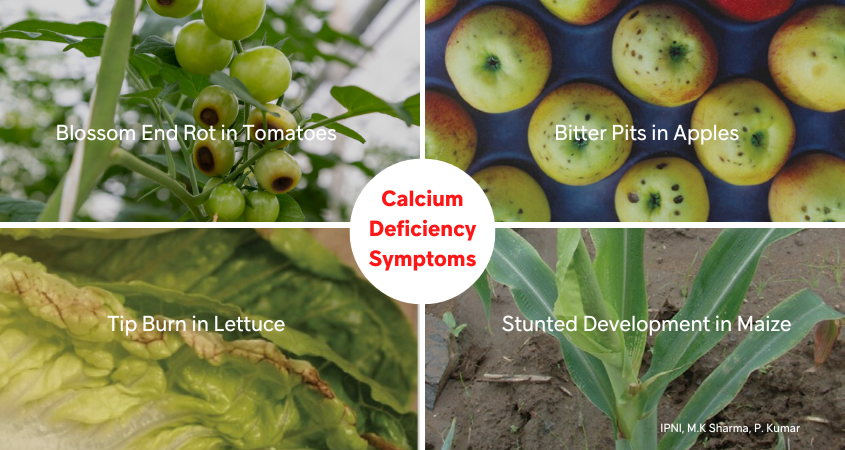
Calcium (Ca) is a vital nutrient essential for robust plant growth and development, yet often overlooked compared to nitrogen, phosphorus, and potassium. In today’s discussion, we will explore the critical role of calcium in plant physiology and its importance for achieving healthy crops and higher yields.
Calcium is a primary component of plant cell walls, contributing to their strength and integrity. Adequate calcium levels enhance cell wall rigidity, reducing the risk of diseases and improving plant resilience. Calcium also supports nutrient transport within plants and participates in enzymatic functions crucial for metabolism and growth.
Calcium nutrient availability in soils is influenced by soil pH and texture. Generally, calcium is most available in soils with a pH range of 6.0 to 7.5. Both highly acidic (pH below 6.0) and alkaline (pH above 7.5) soils can limit calcium uptake by plants. Soil texture also plays a role, with sandy soils typically having lower calcium retention compared to loam or clay soils.
Soil organic matter significantly improves the soil’s capacity to store and supply essential nutrients, including calcium. Soil organic matter is vital in improving soil structure and water-holding capacity, and reducing the risk of calcium leaching in sandy soils. Practices such as crop rotation, cover cropping, and minimal tillage help preserve soil organic matter, thereby sustaining calcium levels.

Symptoms of calcium deficiency include stunted plant growth and distorted or deformed leaves which may exhibit abnormal shapes or edges. Weak cell walls due to calcium deficiency can increase susceptibility to diseases and disorders. Blossom-end rot is a common disorder in fruits like tomatoes and peppers, characterized by dark, sunken spots at the bottom of the fruit.
To address calcium deficiencies, farmers can use calcium fertilizers like calcium nitrate (CN), calcium ammonium nitrate (CAN), gypsum (calcium sulfate), or lime (calcium carbonate). Application rates should be based on soil tests and crop requirements, considering the existing soil calcium-magnesium ratio and other soil properties.
In conclusion, farmers and agronomists can optimize calcium nutrient availability for healthy crops and higher yields by carefully managing soil pH within the ideal range of 6.0 to 7.5, improving soil organic matter, and applying appropriate calcium-containing fertilizers and liming materials based on soil test results. For personalized guidance on optimizing calcium nutrient use with soil testing, feel free to contact our experts at support@cropnuts.com.
Grow more with less
#savesoil #soilhealth #soilscience
Order our services and get to know how to improve your soil for better yeilds.